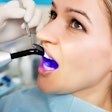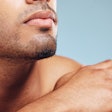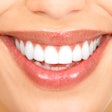
By far the biggest myth about producing emotive dental photos is the necessity for expensive equipment and additional training with photo-retouching and editing software, according to a presenter at the Chicago Dental Society 2023 Midwinter Meeting.
Once clinicians understand a few basic principles of light and composition, differentiating between dental photographs that were produced with a $5,000 setup versus those that were taken with a $500 setup is nearly impossible, said presenter Dr. Miles Cone, who operates a private practice in Maine and offered tips for snapping the best images.
 Dr. Miles Cone. Image courtesy of Dr. Cone.
Dr. Miles Cone. Image courtesy of Dr. Cone."I believe that this is especially important for the clinicians that are brand new to the world of dental photography," Cone said. "You absolutely do not need to break the bank or lose your mind figuring out new photo-editing applications to produce outstanding images."
Dental photography serves as an effective tool for communication among dental colleagues, as well as an emotional means of marketing to patients regarding clinical services. With a little practice, Cone said clinicians can publish outstanding photos that enhance one's personal and professional development, boost social media engagement, and are suitable for publication in scientific peer-reviewed journals.
"Stunning before and after dental photography absolutely has the ability to make or break a dental office," Cone explained. "Patients are constantly bombarded by advertisements and marketing tactics. As a result, they have become very savvy at recognizing stock images on dental websites."
Therefore, presenting authentic, emotive photographs of patients has become more important than ever.
"Almost every one of my patients comment ... the reason they chose our office is because the treatment results in our patient portfolio were by far the best," Cone said. "Social media has such a tremendous reach, and photography-based platforms such as Instagram allow clinicians to put their best work on full display to a limitless number of potential patients."
Taking pictures
Cone said photography for dentistry should be easy and uncomplicated. A streamlined and predictable setup would consist of a decent digital single-lens reflex (DSLR) or mirrorless camera body, a 100 mm macro lens, and a twin flash. A ring flash also would be appropriate, but it has less versatility than a twin flash, he said.
Smartphone photography is an excellent option for most dental practices, because it allows the process to be systematized and delegated to staff members regardless of their prior photography experience. Also, most people are already familiar with the camera built into their smartphones compared to a DSLR camera, Cone said.
What's needed for analyzing tooth shade
For intraoral shade analysis, a high-resolution DSLR camera or smartphone and a well-positioned and accurate shade guide are musts. Cone prefers the Vita Linearguide 3D-Master, because it is a shade guide that consistently has the closest approximation to natural human teeth.
"For the clinicians that want to go a step further, the use of cross-polarized photographic filters, such as polar_eyes for DSLR users (available through PhotoMed) or those used in conjunction with a smartphone, such as the Smile Lite MDP 2 (Smile Line USA), can be a tremendous benefit to the dentist, ceramist, and, of course, the patient," Cone explained.
Additionally, top aesthetic dentists and laboratory technicians use special technology, including colorimeters and spectrophotometers, to set their restorations apart from the rest.
Get inspired by bugs and couture
Most dentists already have the photographic gear they need, but in many cases, their photos are missing image composition. The best insights he acquired for creating more interesting photographs were gleaned from professions outside of dentistry, Cone said.
"Browse through fashion magazines for lighting inspiration, look at online forums to explore the world of insect macrophotography to see how to frame small objects and focus on the truly interesting details," he said. "These are very low-hanging fruit concepts that cost nothing but will change your mindset for how you approach your dental photographic projects."
Also, Cone reminded dentists that practice makes perfect. Dentists who want to improve need to put in the hours practicing their dental photography. Fortunately, dentistry is a profession that lends itself to being photographed because there is never a lack of content, he said.
"For the folks that are anxious about posting their work in a public forum, create an anonymous username, showcase your efforts, ask for feedback, and be patient with the process," he said.




















